Roulette – the best and worst betting strategies
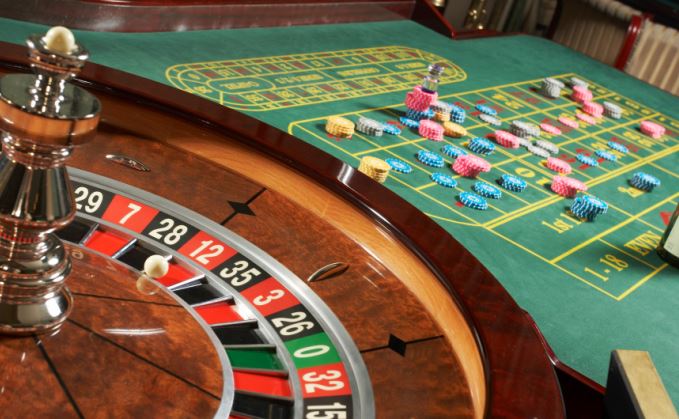

Roulette is a fascinating table game with many existing strategies
Roulette is played for centuries and is and remains immensely popular. It’s fascinating to see that so many people enjoy playing it.
Yes, it adds a lot of excitement, and there are chances to win big. It helps tremendously that the game is easy to play.
And who hasn’t seen James Bond at the Roulette table?
Many Roulette betting strategies are known
As so many people are interested, it was only a matter of time to see the many Roulette strategies emerging. Some are well known and also used by many players.
The betting strategies aim to get a better grip and avoid making costly decisions. After all, we’re talking about your money.
Using Roulette strategies, keep your head straight, shall I say? I know (also from my own experience) that emotions can lead to irrational decisions. I can only say that it’s much better to stick to a strategy.
I’ll refer to “betting strategies” because the strategy you apply has all got to do with the amount you “bet” or “stake”.
The most famous and popular Roulette betting strategies are suitable for even bets (bets on Red/Black, Even/Odd or 1-18/19-36) and focus on these bets only. The most famous strategies are:
With the Martingale Strategy, you double your stake, if you have lost the previous game. You continue to double each time until you win. Once you win, you start the sequence again. The idea is that, if you double every time, after a loss, you end up with a profit. Unfortunately, once you lose 8 (or more) consecutive times, you could end up in an awkward situation that your bankroll has dried up. Besides, you could face limits imposed by casinos. The Reverse Martingale Strategy works in the exact opposite way. You double your stake if you have won the previous game. If you have a winning streak, this strategy is very appealing. The Fibonacci Strategy is comparable to the Martingale Strategy, but the increments of increasing the next stake (after a loss) are not as steep as the Martingale Strategy. It follows the series 1-2-3-5-8-13-21 etc. It is less progressive and less risky than the Martingale Strategy. In the D’Alembert strategy, you increase your stake with 1 unit (say 1$) after a loss. After a win, the increment decreases with 1 unit. The stakes become much higher in the case you have lost more times than you have won. The idea is that you can make up for the previous losses, with the higher stakes. |
The question of which Strategies are the best – hasn’t been answered…
Until now!
I have seen so many descriptions of all these betting strategies. But it doesn’t tell me if these are appropriate or not. After all, some strategy must be better than others, right? And perhaps, some don’t work at all!
I wanted to stick my nose into this and decided to have extensive research. I simulated the Roulette game 1 million times (1 million sessions of 100 spins) with the computer.
To ensure independent and thorough research, I relied on a Random Number Generator.
Please, let me tell you more, about it.
Remarkable is that some roulette strategies are totally inappropriate…
What struck me most is that some strategies achieve much better results than others. And worse, that some deliver abysmal results.
I felt it was inevitable to share my findings with you. Yes, Roulette should be captivating and enjoyable to play, but it should not be at all costs. At least, you should not throw money down the drain for no reason.
Bad luck happens, but if you make the wrong decisions, it’s a bit of a waste.

Overview of best and worst Roulette betting Strategies – for even bets
In the first instance, I looked at betting strategies for even bets. Even bets are bets where the odds of winning or losing are (roughly) the same. For Roulette, the most common even bets are:
- “Red” or “Black”
- “Even” or “Odd”
- “1-18” or “19-36”
The conclusions and calculations are based on European Roulette, as this version is the best version to play. American Roulette is another popular variant, but this version has two zeros (a “0” and a “00”) and is therefore much less favourable to play. In other words, the house edge of European Roulette is 2,70%, and of American Roulette, it is 5,26%.
Let’s get back to my conclusions, which you see in the table below.
You can see that some strategies are more appropriate for players who prefer to play more cautiously (risk-averse players) than for players who like to play more aggressive (risk seekers).
The risk-averse players are best off with the Constant Bet Strategy, or otherwise with the less risky variant of the Reverse Martingale Strategy (I’ll give the details further below).
More aggressive players (risk seekers) are best off with the Reverse Martingale Strategy.
Strategies to be avoided at all times are the Martingale Strategy, the D’Alembert Strategy and the Red Bet Strategy. I’ll elaborate on this below.
The Constant Bet Strategy works well for recreational and risk-averse players.
This betting strategy works great if you’re a novice Roulette player and are in there to play as long as possible. Having fun is paramount and making a modest profit is lovely, but not the main aim.
The main advantage is that the risk (as long as your bets are relatively low) is limited. After all, your stakes always remain the same. Therefore you won’t end up in a situation where your stakes become higher after a profit or a loss, which is usually the case with other strategies.
The disadvantage is that this strategy becomes a bit boring. Besides, it won’t make you rich. For the latter, you need to take more risks.
The Martingale Betting Strategy – the most famous strategy falters in every single way
With this strategy, you double your stakes if you lose. You only start the sequence from scratch when you win.
The results show that this strategy does not yield the best results.
The stakes (after you have lost say 6 or 7 times consecutive times) are so high that if you lose again, you end up empty-handed. And, it happens more often than you think. The upside potential is also limited. After all, the win (after a successful sequence) is limited to 1x the original stake.
It may sound surprising that this strategy produces these poor results. After all, it’s the most famous strategy?
The fact is that the Martingale strategy is way too risky and doesn’t work in practice. It only works in a hypothetical world where you’ve got an unlimited bankroll and where the casino allows you to stake to infinity. We all know that this is not what’s like in the real world. Casinos have their limits, and I’m sure you have as well.
The Reverse Martingale Betting Strategy – the best strategy for players who want to take a bit of risk
This strategy works like the Martingale Strategy, but the other way round (what’s in the name). You double your bet if you have won the previous game.
It becomes highly lucrative if you manage to win several consecutive times. You decide upfront if you stop doubling after 3, 4, 5 or 6 straight wins.
This strategy has four variants: the 3-step, 4-step, 5-step, or 6-step Reverse Martingale Strategy. After all, it is not realistic to continue doubling. At some stage, you stop.
This strategy’s main advantage is that you only take more risk when you’re on a winning streak.
The danger is that you will not get the so-wanted long winning streak (say 5 or 6 consecutive wins). As a result, you could end up empty-handed.
My calculations prove that this strategy yields the best results, as long as you are keen to take a risk.
The D’ Alembert Betting Strategy – no, don’t do it
The D’Alembert Strategy does not work. It is too risky, and the problem is that the stakes are way too high at some stage.
After all, you increase your bet every time you lose. The stakes decrease following a win. But, if you have lost more often than you have won, you could end up in a situation where the stakes are too high and where everything goes the wrong way.
This strategy is doesn’t work, and it’s best to forget about it.
The Fibonacci Betting Strategy – a famous mathematician, but the strategy is not built for Roulette
Even though a famous mathematician develops the Fibonacci Strategy, it doesn’t necessarily imply it’s a good strategy for Roulette.
The strategy is less risky than Martingale or D’Alembert’s Strategy, but still wat too risky, whilst the return is limited. In the end, it doesn’t generate enough profits to compensate for the risk.
With the Fibonacci Strategy, you get yourself into serious trouble, if you lose 6 or 7 consecutive times.
The Red Bet Bet Strategy – the worst strategy and incredibly stupid
The Red Bet strategy only works well if you prefer to throw away money for no reason. To come to this conclusion was so straightforward that I did not even do extensive calculations.
The example below illustrates the madness of this strategy.
Suppose you bet on Black and you can choose to play the Constant Bet Strategy (the bet is $/€ 1 on Black) or the Red Bet Strategy (the bet is $/€ 2 on Black and $/€ 1 on Red).
RESULT CONSTANT BET STRATEGY
- With Black, you get paid $/€ 2. Your profit is $/€ 1.
- With Red, you lose $/€ 1.
- With Green (the “0”), you lose $/€ 1.
RESULT RED BET STRATEGY
- With Black, you get paid $/€ 4. Your profit is $/€ 1, as you staked $/€ 3 in total.
- With Red, you get paid out $/€ 2 because you staked $/€ 1 on Red. But you also staked $/€ 2 on Black. On balance, you lose $/€ 1.
- With Green (the “0”) you lose a total of $/€ 3 (you staked $/€ 2 on Black and $/€ 1 on Red).
Do you see the difference? The results are the same for both strategies if the ball hits the Red or Black pocket. But if the ball hits “0” you only lose $/€ 1 with the Constant Bet Strategy but a staggering $/€ 3 with the Red Bet Strategy.
In short, never play the Red Bet Strategy. It’s invented by casinos to increase their profits. At your expense!
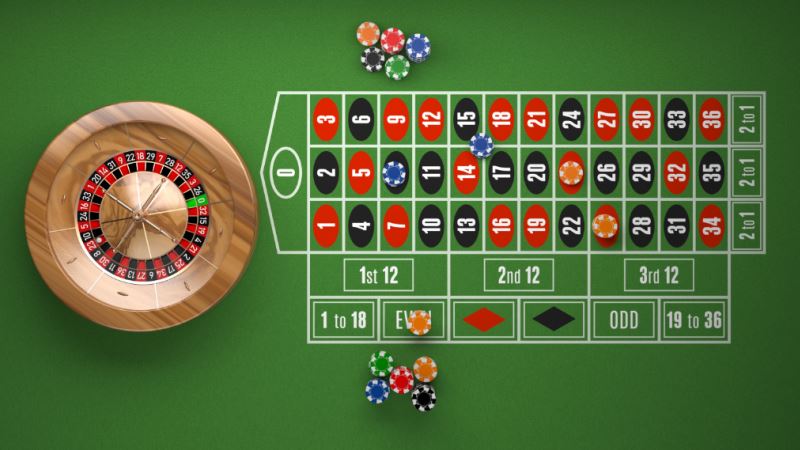
Results calculations Roulette betting strategies
Below, I have the details of the calculations that support my conclusions. Yes, the research was extensive, but it was worth it! I used a Random Number Generator and a mathematical programming language (“R”).
I carried out 1 million Baccarat sessions of 100 games (or round). For those 1 million sessions, I worked through the various strategies.
The analysis below is a bit statistical, so mainly written for those readers who are keen to understand the ins and outs.
Two types of players – risk-averse players and risk-seeking players
I have carried out the calculations for two groups of players:
- Players who prefer to avoid the risk and are cautious. Usually, these are recreational or novice Baccarat players.
- Players who like to take more risks and aim for a bigger win. They know that odds of winning massive are not as high, and that odds of losing the entire bankroll are substantial.
Below, I summarise the assumptions in my calculations for risk-averse and risk-seeking players.
RISK-AVERSE PLAYERS
- The total initial deposit (bankroll or balance) is $/€100.
- The player stops, once he has a balance of $/€200 or more (so at least $/€100 profit). Once he has reached this balance, he stops playing.
- The player also stops playing if his balance is zero (that is, he has no money left)
- The stake of the first spin is $/€ 1
- The session ends after 100 times.
RISK-SEEKING PLAYERS
- The total initial deposit (bankroll or balance) is $/€100.
- The player stops, once he has a balance of $/€500 or more (so at least $/€400 profit).
- The player also stops playing if his balance is zero.
- The stake of the first spin is $/€ 5
- The session ends after 100 times.
Results for risk-averse players
Below are the results for risk-averse (defensive) players.
If you apply the Martingale Strategy, there is a 33.3% chance that you lose the entire initial bankroll of $/€100. Chances of losing everything are higher, though, than with any other strategy. In short, this strategy is too risky if you are risk-averse.
Besides, you see that the expected payout percentage of 90.9%, which is lower than with most other strategies. Only the D’Alembert Strategy has a lower and worse payout percentage (87.2%).
The Constant Equal Bet Strategy has the highest expected payout percentage (97.4%), but your chances of making over 40$/€ are nil.
The Reverse Martingale Strategy delivers the best results. You’ll not end up empty-handed. Moreover, you have an excellent chance to make a sizeable profit. The payout percentage is also pretty good.
Results for players seeking more the risk
Below, you see the results for the more offensive players.
If you stick with the Martingale Strategy, you’ll have a 72.9% chance of losing everything. Again, it is considerably higher than most of the other strategies. In short, this strategy does not bring what you want as an offensive player. Even worse, you have no chance of making a profit of $/€ 400 (which was the original aim).
Results for the Reverse Martingale Strategy are much and much better. Yes, the odds of losing everything are also substantial (66.3% in the 5-step and 76.7% in the 6-step) but, now you do have a realistic chance of making the targeted $/€ 400 profit.
The D’Alembert Strategy is, also for risk-seeking players, the worst strategy. The expected payout percentage is a low 74.9%. Besides, chances of bagging the $/€ 400 profit are nil.
You can see that the Constant Bet strategy has the highest payout rate of 87.1% but that there are no chances to win big. Win anything above $/€200? It won’t happen.
You may also like
How often does the 500 x bet hit on Lightning Roulette? Instant Roulette Live review (Evolution Gaming) |
Play online Roulette at these online casinos
If you are looking for great fun and want to enjoy Roulette, you can check out the online casinos in our list below.
These online casinos offer you the chance to play real money casino games or play with practice money.
100% Match Bonus
🍒Thousands of Slot Games
✅Professional Customer Service
⚡️Withdrawal lock option
Bonus Match Percentage: 100%
Maximum Bonus Value: €100
Free Spins: 100 Extra Spins
Free Spins Slot Game: Gonzo’s Quest, Twin Spin, Jack and the Beanstalk, Spiñata Grande, Fruit Shop.
Bonus Wagering: 48 x Bonus
Free Spins Wagering: 48 x Free Spins
Remarks: The maximum bonus bet is $€5. Any unused bonus money will expire after 7 days. 18+ www.begambleaware.org. Full T&C Apply. "
100% up to€400 Bonus
❤️Best Mobile Casino
🎁VIP Bonus Options
🍓Live Casino Bonuses
Bonus Match Percentage: 100%
Maximum Bonus Value: €400
Free Spins: 100 Free Spins + 20 No Deposit Free spins
Free Spins Slot Game: All games
Bonus Wagering: 35 x Bonus
Free Spins Wagering: 35 x Free Spins
Remarks: Players will have to redeem the No Deposit Free Spins by clicking on the ‘’Claim’’ button on the player’s ‘’My Offers’’ page on Leovegas.com. 18+ www.begambleaware.org. Full T&C Apply.
€333 Bonus Package
🔥New Casino
⚡️Quick Banking
🍒Reward Scheme
Bonus Match Percentage: 100%, 50%, 50%
Maximum Bonus Value: €333
Free Spins: 99 Free Spins
Free Spins Slot Game: Big Win Cat
Bonus Wagering: 45 x Bonus
Free Spins Wagering: 45 x Free Spins
Remarks: The maximum stake allowed when having an active bonus is €5. Full T&C apply. begambleaware.org. 18+
Relevant news

How often does the 500 x bet hit on Lightning Roulette?
Evolution Gaming's Lightning Roulette is unique compared to other Roulette variants Why? Because of the so-called…

How does the Fibonacci strategy work?
The Fibonacci strategy finds its origins in the famous Fibonacci sequence You probably have seen…
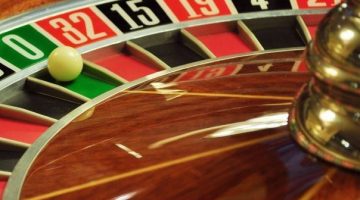
How does the D’Alembert strategy work?
The D’Alembert strategy is designed for betting on ‘even' bets on games such as roulette,…
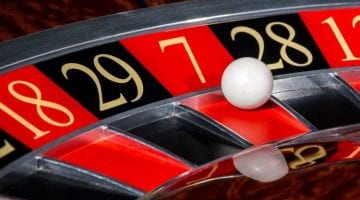
How does the Martingale strategy work?
The Martingale strategy is the most famous betting strategy, by far. It is a betting…

How does the Reverse Martingale (Paroli) strategy work?
The Reverse Martingale strategy is a variation of the famous Martingale strategy. It can be…

Free Bet Blackjack (Evolution gaming)
Evolution Gaming continues to develop thrilling table games. In November 2019, they launched a new…

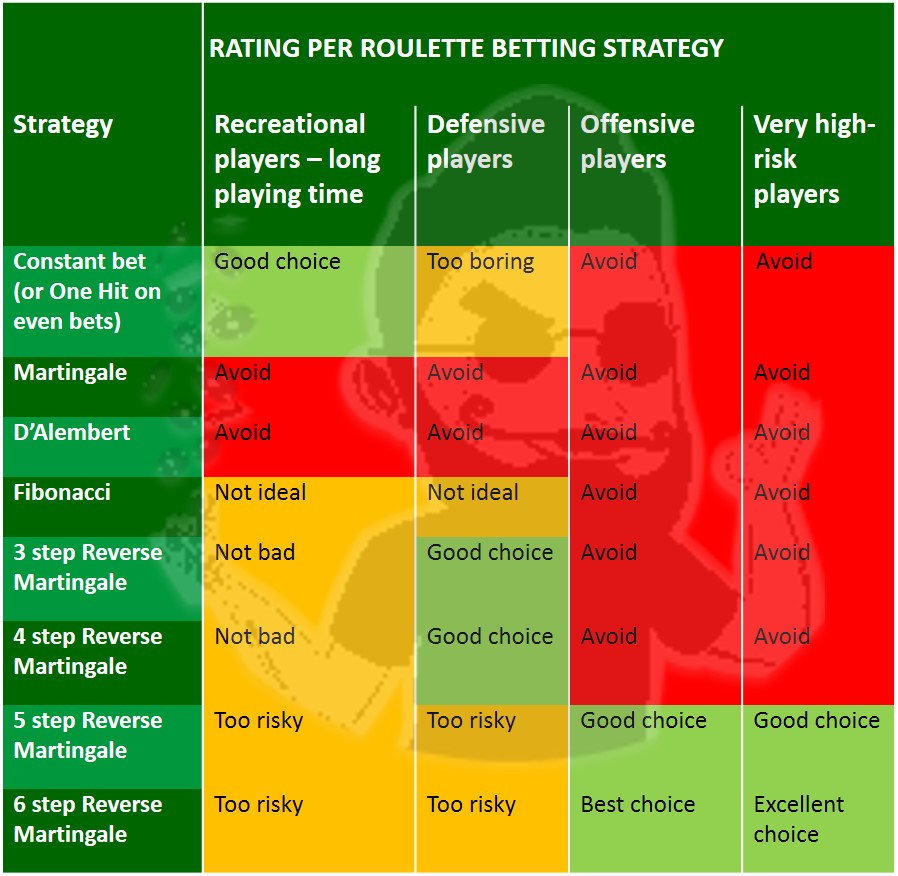
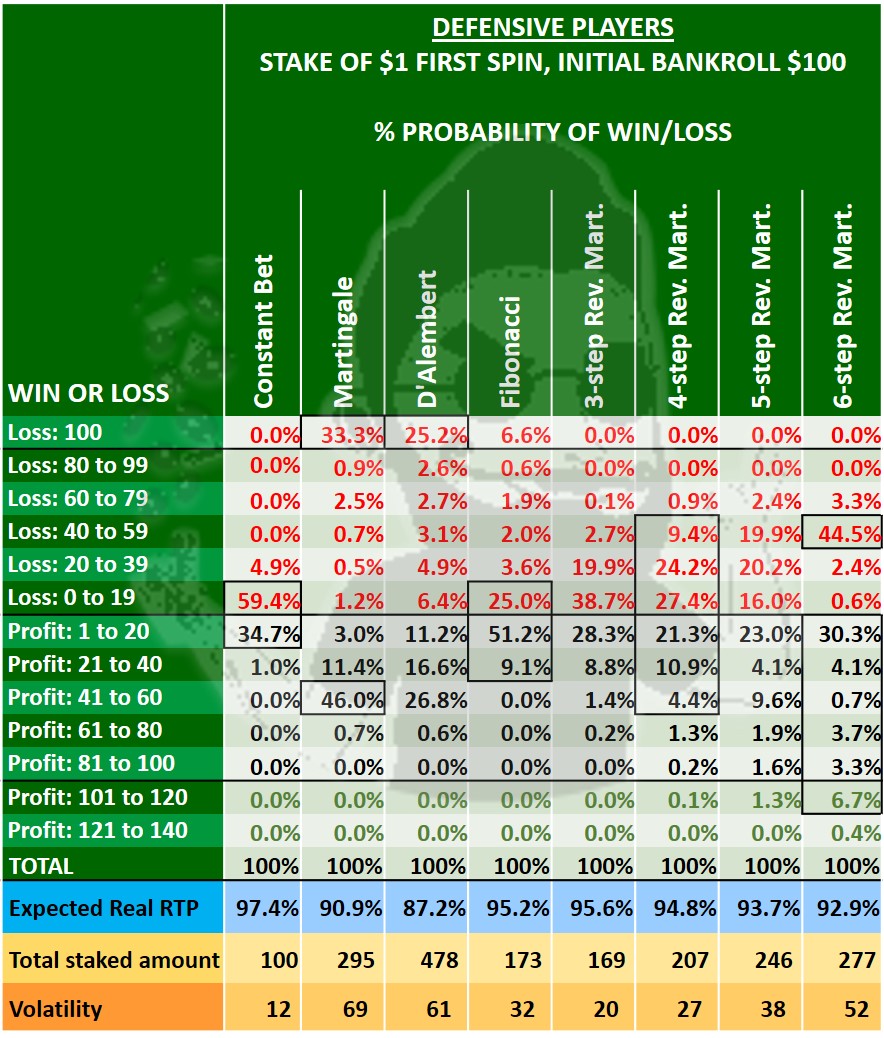
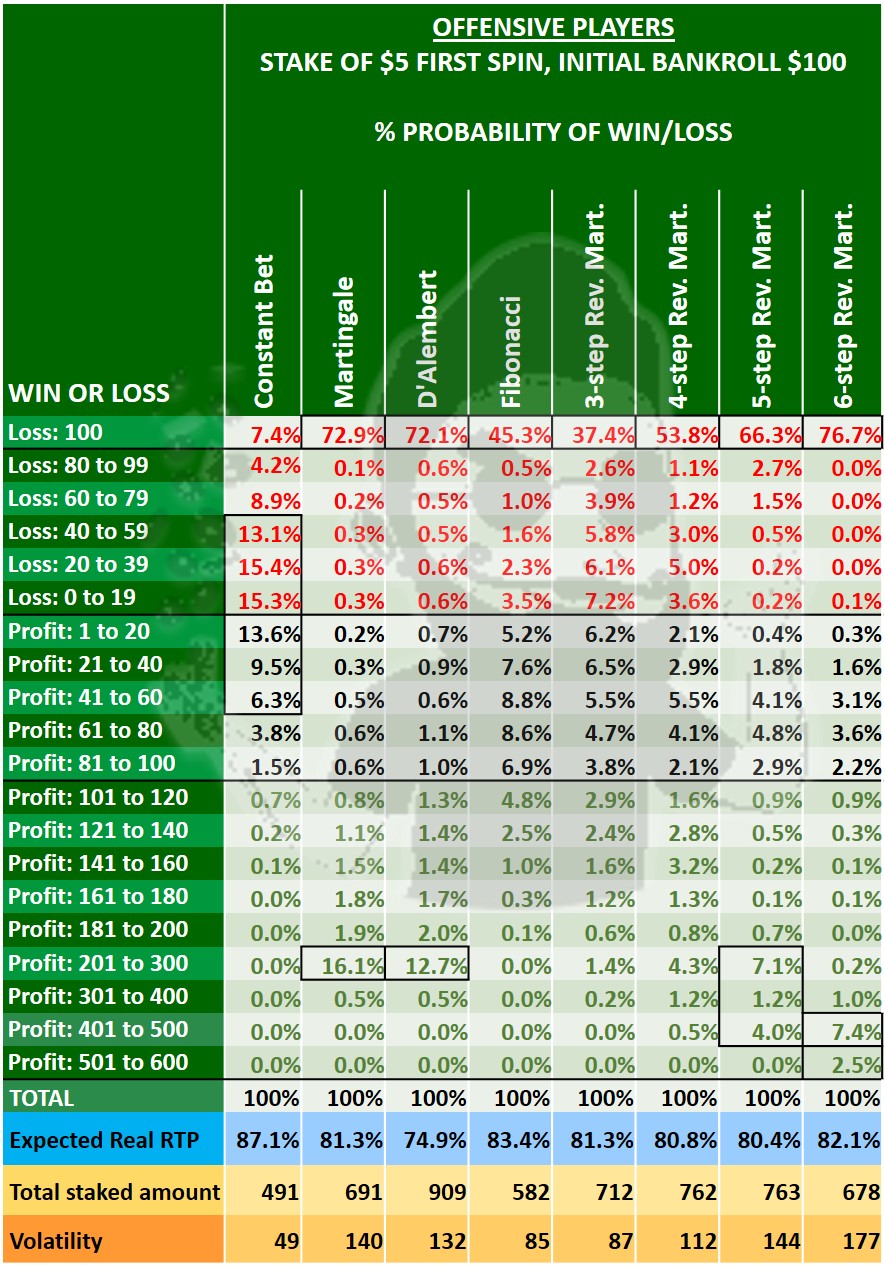



Login
Register